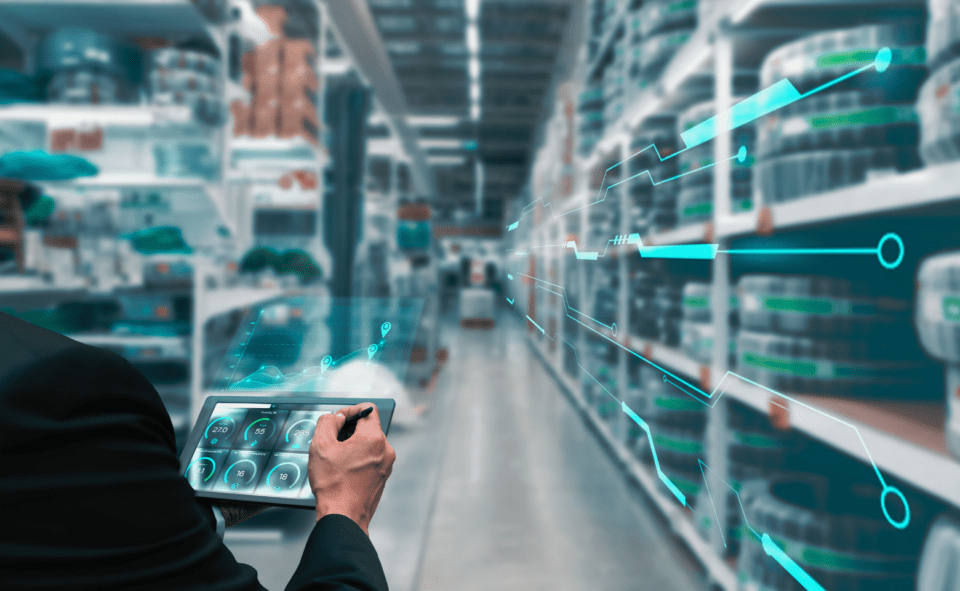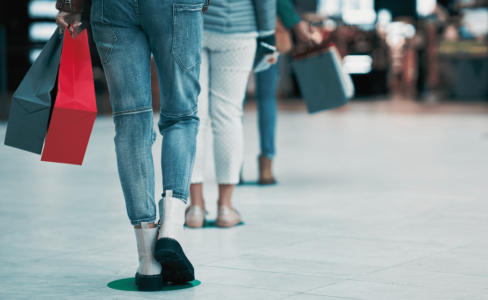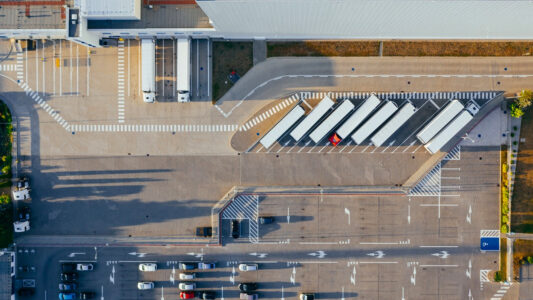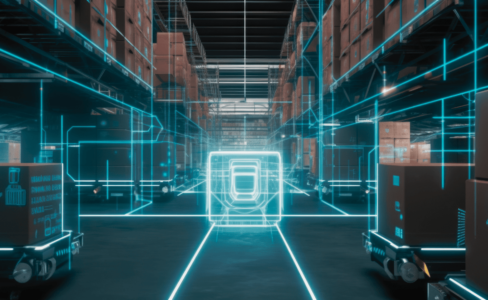The buzz around AI and its myriad applications seems ceaseless. Among the diverse array of possibilities, Computer Vision stands out as a potentially disruptive force in the realm of retail, promising to overhaul both store operations and the customer experience.
Recent statistics underline a technological revolution sweeping through the retail sector. A staggering 80% of retailers deem technology crucial for their future success, with 70% of major players already incorporating or planning to integrate computer vision into their operations. What makes this technology so compelling? Let’s delve deeper.
Do you want to know what makes it so interesting?

What Exactly is Artificial Vision (Computer Vision)?
Computer Vision, a branch of Artificial Intelligence (AI), empowers computers to interpret and scrutinize their surroundings by processing images and videos. It equips machines with the ability to perceive and extract pertinent information from the real world, akin to human visual and cognitive functions.

What Advantages Does it Offer?
The adoption of computer vision in retail promises a host of benefits, directly influencing efficiency and cost savings:
Enhanced Customer Experience:
- Behavioral analysis
- Tailored product recommendations, promotions, and offers
Optimized Stock Management:
- Real-time stock tracking
- Loss prevention
- Efficient stock replenishment
Improved Security and Oversight:
- Theft prevention
- Employee monitoring
- Customer traffic analysis
Data-driven Decision-Making:
- Analysis of customer preferences
- Optimization of marketing strategies
- Streamlined personnel management
Boosted Competitiveness:
- Market differentiation
- Enhanced brand image

How Does it Operate?
Here’s a breakdown of the Computer Vision process for information extraction:
1. Image acquisition:
- Image capture through cameras or sensors
- Image preprocessing for quality enhancement
2. Feature extraction:
- Segmentation to identify objects, edges, or textures
- Extraction of relevant features like shapes, colors, patterns
3. Interpretation and analysis:
- Classification and recognition of segmented regions
- Detection and tracking of objects or people
4. Decision-Making:
- Execution of commands based on image-derived information
- Interaction with the real environment
5. Learning and Improvement:
- Training of Machine Learning Models for Accuracy and Efficiency
- Utilization of Deep Learning for Complex Feature Extraction
How Can I Successfully Integrate Computer Vision?
Successful integration requires a comprehensive strategy addressing technical, legal, and organizational challenges:
Technical challenges
Computer vision relies on large amounts of high-quality data to train accurate models, which can be computationally demanding and require specialized hardware. On the other hand, its integration with existing business systems can be complex and require customized adaptations. Furthermore, Computer Vision systems must be robust and reliable to operate in real environments with variable conditions.

Legal challenges
The European Union has ratified the Artificial Intelligence Law, which aims to regulate the use of this technology to ensure its security and transparency in the development and application process. This legislation establishes different levels of risk and responsibilities for both, providers and users of AI. Also, it places a strong emphasis on transparency and respect for fundamental human rights.

Organizational challenges
Implementing this AI technology in a company not only involves adopting new technology, but also changing the way daily operations are carried out. This cultural change requires processes to adapt and staff to be trained, to actually make the most of this innovation. To carry out this transformation, highly trained professionals are needed, such as Machine Learning engineers and data scientists, who will be responsible for developing and implementing effective solutions. This may also require a significant initial investment of financial and human resources. Therefore, it is crucial to carefully evaluate the expected return on investment to ensure that the benefits justify the costs. Last but not least, open communication and effective collaboration between different departments are essential to ensure the success of the implementation, as it allows aligning objectives and maximizing the potential of this disruptive technology throughout the organization.

At baobab soluciones, we understand the challenges businesses face when implementing new technologies, and we are here to help you every step of the way. With a team of highly trained experts and extensive experience in the development and implementation of technological solutions in various industries, including retail, we are ready to offer you tailored solutions that fit your specific needs and exceed your expectations. Trust us to guide you through this process and help you successfully achieve your business goals.
Below, we present examples of successful applications in retail:
1. Amazon Go:
Physical stores without cashiers where customers scan their products and are automatically charged through their Amazon accounts.
- Benefits:
- Eliminate checkout lines and reduce waiting time.
- Improve the shopping experience and customer satisfaction.
- Reduces operating costs and increases efficiency.
2. Alibaba Smile Pay:
Facial payment system that allows customers to make purchases without the need for cash or cards.
- Benefits:
- Speed up the payment process and reduce queues.
- Offers a safer and more convenient shopping experience.
- Collect valuable data on customer behavior.
3. Nike React HyperAdapt:
Sports shoes that automatically adapt to the shape of the user’s foot, providing a personalized fit.
- Benefits:
- Improves athlete performance and comfort.
- Reduces the risk of injury.
- Customize the wearing experience of the shoes.
4. CVS Pharmacy:
Use of technology to monitor store shelves and detect out-of-stock or poorly placed products.
- Benefits:
- Ensures availability of products to customers.
- Reduces loss of sales due to stockouts.
- Optimizes inventory management and product replenishment.

Computer Vision offers a wide range of benefits that directly impact business profitability, from personalizing the shopping experience to optimizing inventory and security. However, its implementation presents challenges that require the assistance of highly trained experts. We are in the right moment to explore this path that will soon become a market standard.
To stay up to date with the latest trends and developments in Artificial Intelligence and other technologies, be sure to subscribe to our newsletter and follow our page of LinkedIn.



